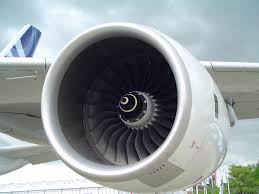Rising costs to hit falling fares.
06 July, 2017
3 min read


Airlines filled a record percentage of seats in May as passenger demand remained strong and airfares in the second quarter fell about 6 per cent compared to last year.
Global demand for the month grew by 7.7 per cent as the load factor rose 1.2 percentage points to post a new May record of 80.1 per cent. That was down on the 10.9 per cent growth recorded in April but still ahead of the long-term average.
The International Air Transport Association said the six per cent drop in fares compared to the second quarter last year contributed to about two-fifths of the growth.
But there is some bad news: the degree of fare stimulus is about half what it was in 2016 and IATA is expecting it to fade due to rising airline cost pressures and softening business confidence.
Nonetheless, the airline umbrella group is still expecting good demand in the upcoming peak travel months of July and August.
“Passenger demand is solid,’’ IATA director general Alexandre de Juniac said in a statement. “And we don’t foresee any weakening over the busy summer months in the Northern Hemisphere.
“But the rising price of fuel and other input costs is likely to see airlines’ ability to stimulate markets with lower fares taper over the coming months.’’
“In parallel, rising trade protectionism and barriers to travel are worrying trends that, if unchecked, could impact demand.’’
Global International traffic rose 7.7 per cent in May while worldwide domestic demand rose 7.9 per cent.
Above average international growth was seen in the Asia-pacific (10.5 per cent), Latin America (9.3 per cent) Africa (11.7 per cent) and Europe (7.5 per cent).
North America came in at 4.8 per cent while Middle East carriers hit an eight-year low of 3.7 per cent growth compared to May last year.
“Although year-to-year comparisons are distorted by the strong performance for the same period a year ago, the slow-down also reflects the ban on the carriage of large portable electronics devices in the cabin from 10 airports in the region to the US, as well as a wider impact on inbound travel to the US from the Trump Administration’s proposed travel bans,’’ IATA said of the Middle Eastern figures.
“Passenger traffic growth in the Middle East to North America market was already slowing in early-2017. But RPKs fell again in April (-1.2%) for just the second time since at least 2010.
“In view of the recent Supreme Court ruling, these impacts could continue. By comparison, the route to and from Europe has continued to trend upwards this year.”
On the domestic front, China, India and Russia remained the growth leaders while Japan saw a 10.3 per cent year-over-year surge against “a robust economic backdrop’’.
Growth in Australian domestic traffic remained subdued at 1.0 per cent with capacity down 3.1 per cent.
Get the latest news and updates straight to your inbox
No spam, no hassle, no fuss, just airline news direct to you.
By joining our newsletter, you agree to our Privacy Policy
Find us on social media
Comments
No comments yet, be the first to write one.

